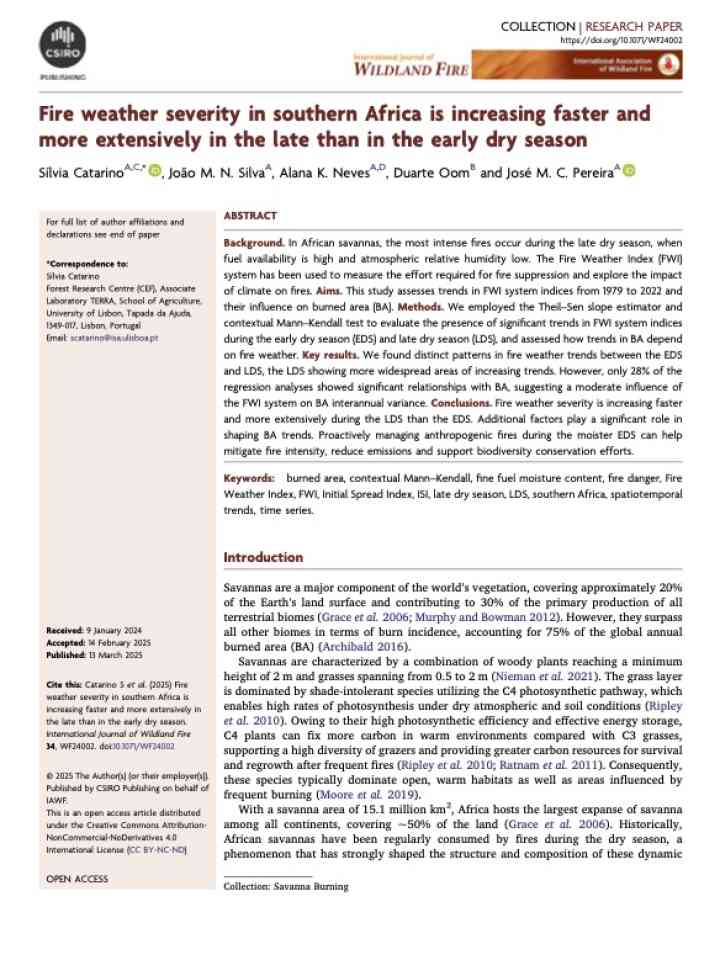Fire weather severity in southern Africa is increasing faster and more extensively in the late than in the early dry season
This study assesses trends in the Fire Weather Index (FWI) system indices from 1979 to 2022 and their influence on burned area (BA). It employed the Theil-Sen slope estimator and contextual Mann-Kendall test to evaluate the presence of significant trends in FWI system indices during the early dry season (EDS) and late dry season (LDS), and assessed how trends in BA depend on fire weather.
The results show that fire weather severity is increasing faster in the late dry season than in the early dry season. This trend is especially strong in Angola, Mozambique, and Zambia. Although fire weather conditions influence burned area trends, other factors, including human activity, play a role. The study suggests shifting fire management to the early dry season when fires are less intense, potentially reducing emissions and protecting biodiversity.
Explore further
